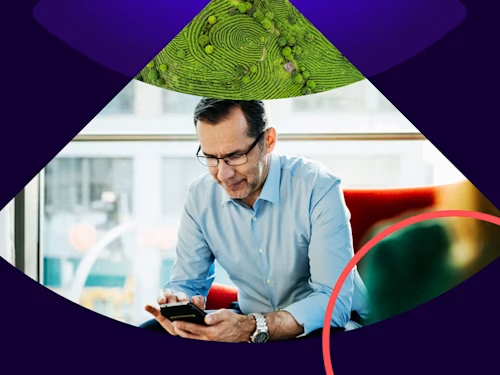
Modernizing Your Agency’s Processes to Optimize Infrastructure Funding
Learn how agencies can embrace the cultural change required for embracing true digital transformation – in the face of new infrastructure funding.

With the $550 billion dollars of Infrastructure Investment and Jobs Act funding allotted for states, there is a tremendous opportunity for state-level Departments of Transportation (DoTs) to leverage this funding for transformative efforts.
This funding provides an opportunity to modernize and optimize all agency operations to drive more efficiencies and better future outcomes. At the core of these processes are agreements and forms that require signatures.
For state-level DOTs, replacing paper-based processes with easy-to-use digitized forms can simplify complex workflows and drive process improvement. Ultimately, this will lay the foundation for effectively leveraging this funding for mission success.
David Esse, Innovation, Strategy & Planning Officer, Division of Business Management – Bureau of IT Services, Wisconsin Department of Transportation (WisDOT), recently participated in this Government Technology webinar about how agencies can optimize infrastructure funding.
Below are the key points and commentary that Esse provided for how any agency can embrace the cultural change required for embracing true digital transformation – in the face of new infrastructure funding.
What approaches did you employ to achieve the innovative environment within WisDOT today?
The key factor for achieving an innovative environment at WisDOT was establishing a strong internal culture that was willing to take risks when it came to developing and implementing new innovations.
“For us, it started with clear business drivers that helped us to build a corporate culture that prioritizes process improvement and innovation,” said Esse. “Underneath that, you need strong leadership and mentorship, devoted resources, and finally to develop strong partnerships internally with your IT and budget partners.”
Being able to come up with agreed-upon definitions for having unified internal conversations, as well as going through five development phases, was also critical at WisDOT.
“You need to ensure that you have a simple process that breaks things into phases,” added Esse. “For us, these phases are incubate, demonstrate, pilot, communicate and implement, which are very easy for us to digest and understand. Incubate and demonstrate are low risk, and it’s all about the ‘coffee cup’ conversation. Pilot is about throwing rocks at an idea, and letting your practitioners try it out and take it for a test drive. Communicate those results from that pilot to understand the depth of your implementation, then pull together a plan for implementation.”
Describe the before and after of WisDOT’s journey? What, if any, measurable outcomes did you use to track progress?
At WisDOT, the measurable outcomes came in more intangible forms, where internal change perception was the first priority. After this is achieved, then it’s possible to better measure all IT transformation efforts.
“The big turning point was when I realized that innovation is not about the process, but it’s about the people involved,” said Esse. “Building trust and investing in people internally gets rid of the perception that your innovation program is a ‘flavor of the month.’”
“Then you can really start measuring things,” added Esse. “If you focus too hard on the metrics out of the gate, you will probably not be happy with what you see. You either are going to have a thousand ideas coming in and you can’t handle them all. So you are not successful because you are not delivering on those ideas. Or you are going to have virtually no ideas coming in, and then it’s deemed a failure because you’re not really doing anything from an innovation perspective.”
What are 1-2 ideas that are important takeaways for how to achieve innovation at your agency?
For achieving innovation at WisDOT, Esse put internal stakeholders first, and recommends taking the right risks that are needed for propelling IT modernization forward.
“It’s about engaging and supporting your practitioners and treating your small ideas with respect,” said Esse. “Show and communicate incremental progress to help people understand that this thing is real, and culturally things can change in your organization.”
Removing any fear of failure is also important for taking risks.
“Fail fast and acknowledge those wins,” said Esse. “It’s kind of an old thing to say, but it’s very true. Get past it. You accepted that risk, and maybe didn’t succeed, but that’s okay. And, when you win big, celebrate it.”
Finally, long-term success comes down to culture.
“Our technology will continue to evolve and projects will come and go,” added Esse. “Your culture is really what’s going to matter in the long-term for successful innovation.”
Click here to learn more about the Docusign Agreement Cloud for Government.
Related posts
Docusign IAM is the agreement platform your business needs



